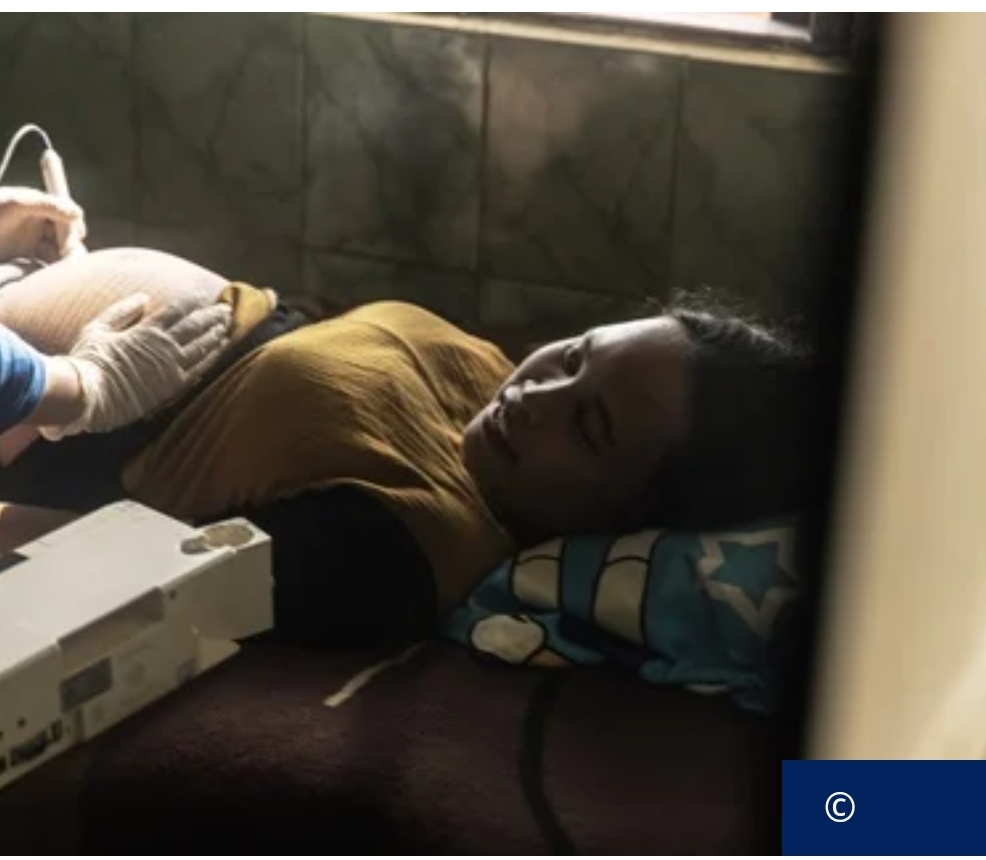UN Report Reveals 40% Drop in Maternal Deaths Since 2000, But Aid Cuts Threaten Global Progress.
Geneva:
A major new report released by United Nations (UN) agencies on World Health Day reveals that maternal mortality has declined by 40% globally between 2000 and 2023, thanks largely to improved access to essential health services. However, the report also warns of a critical risk of backsliding, as unprecedented cuts to humanitarian aid are already undermining maternal health services worldwide.
Titled “Trends in Maternal Mortality,” the report was jointly produced by WHO, UNICEF, UNFPA, the World Bank Group, and the United Nations Population Division. It paints a mixed picture: while significant progress has been made over the past two decades, progress has slowed significantly since 2016, and an estimated 260,000 women died in 2023 due to complications related to pregnancy or childbirth—one woman every two minutes.
Aid Cuts Trigger Health Crisis in Fragile Settings
UN agencies express grave concern over widespread funding cuts to maternal and child health programs, especially in fragile and conflict-affected countries. These reductions have led to the closure of health facilities, loss of health workers, and shortages of life-saving medications and equipment. Treatments for leading causes of maternal deaths—such as postpartum hemorrhage, pre-eclampsia, and malaria—have become increasingly scarce.
Dr. Tedros Adhanom Ghebreyesus, Director-General of the World Health Organization (WHO), emphasized the urgency of reversing this trend.
“While this report shows glimmers of hope, it also highlights how dangerous pregnancy remains in much of the world. The tragedy is that we have the solutions to prevent most of these deaths,” he said. “We must ensure women and girls have access to quality maternity care and control over their reproductive health.”
COVID-19’s Devastating Impact
The report offers the first comprehensive look at the impact of the COVID-19 pandemic on maternal health. In 2021 alone, an estimated 40,000 additional maternal deaths occurred—raising the global total to 322,000 compared to 282,000 the previous year. These increases were linked not only to the virus but also to widespread disruptions in maternity services, reinforcing the importance of maintaining essential health services during emergencies.
Inequality and Risk: The Humanitarian Crisis
The report shows that nearly two-thirds of all maternal deaths now occur in countries affected by conflict or fragility. The risks faced by pregnant women in these settings are staggering. A 15-year-old girl in a conflict-affected region now faces a 1 in 51 chance of dying due to maternal causes during her lifetime—compared to 1 in 593 in more stable countries.
The worst-affected countries include Chad (1 in 24), Central African Republic (1 in 24), Nigeria (1 in 25), Somalia (1 in 30), and Afghanistan (1 in 40).
UNFPA Executive Director Dr. Natalia Kanem stressed the need for comprehensive health system strengthening:
“Access to maternal health services is a human right. We must invest in trained midwives, secure supply chains, and disaggregated data to reach the most vulnerable. Ending preventable maternal deaths is not just possible—it’s urgent.”
Regional Gains and Stalled Progress
Sub-Saharan Africa saw significant declines in maternal deaths and remains one of the few regions, alongside Australia and New Zealand, and Central and Southern Asia, to show sustained progress since 2015. Yet it still bears the heaviest burden, accounting for nearly 70% of global maternal deaths in 2023.
Conversely, progress has stalled in five regions: Northern Africa and Western Asia, Eastern and South-Eastern Asia, Oceania (excluding Australia and New Zealand), Europe and North America, and Latin America and the Caribbean.
A Call to Action
UNICEF Executive Director Catherine Russell warned that funding cuts could reverse decades of progress:
“When a mother dies, her baby’s survival is also in jeopardy. These deaths are preventable. We must act now to strengthen healthcare systems, especially in the world’s most fragile settings.”
The report stresses that beyond maternity services, efforts must focus on improving girls’ education, expanding family planning, and addressing preventable health issues like anemia and infectious diseases that raise maternal risk.
To meet the UN’s Sustainable Development Goal (SDG) of reducing global maternal mortality to less than 70 deaths per 100,000 live births by 2030, the current global rate of decline—about 1.5% annually—must rise to 15% per year, a tenfold increase.
As the world recovers from the COVID-19 pandemic and grapples with multiple humanitarian crises, the message from UN leaders is clear: maternal health must remain a global priority.




